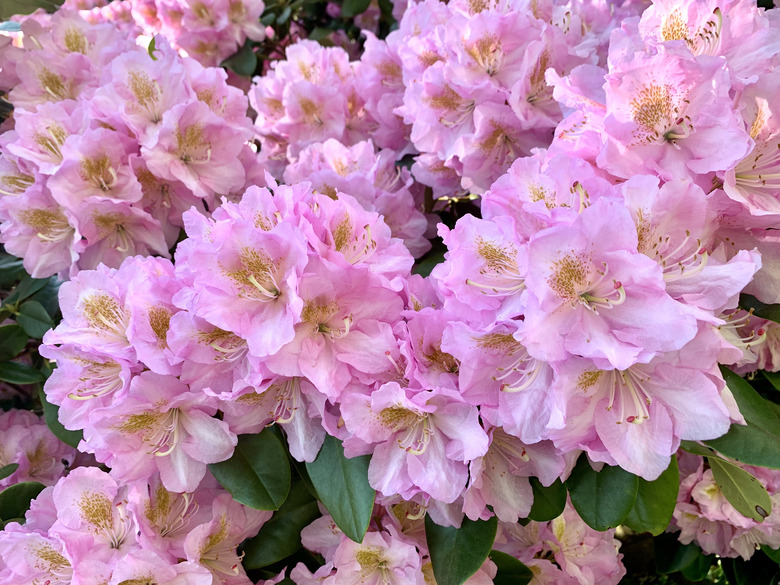How Severely Can You Cut Back A Rhododendron?
We may receive a commission on purchases made from links.
Rhododendrons have been called the kings of the shade garden, providing lush foliage and bright flowers in shaded landscapes. They offer delight in many seasons, with showy spring flowers and deep-green foliage in summer and fall.
Rhododendrons, including azaleas, respond well to pruning, including a rejuvenation pruning when necessary. But it's important to understand basic guidelines for trimming back these garden staples.
Meet the Rhododendron
Meet the Rhododendron
The Rhododendron genus includes both shrubs known as rhododendrons and those called azaleas. Some are evergreen, holding onto their large and lovely leaves all winter long in mild-winter climates. Others, including most azaleas, are deciduous shrubs that inject a pop of color into the fall garden before the leaves drop. But the primary ornamental appeal of these plants is their reliable spring flower display that ranges from impressive to spectacular.
Rhodies, as they are affectionately termed by gardeners, are not plants for the moment only. Some can live to 100 years or more if given excellent cultural care. They are especially favored in partially shaded landscapes in temperate regions. You can purchase shrubs with blossoms in a wide array of colors, from white to deep purple, pink to blood red. Blossoms appear in large clusters at the branch tips, clusters that can reach 12 inches in diameter.
Grow a Rhododendron
Grow a Rhododendron
Although rhododendrons are known as shade plants, it's a mistake to install these shrubs in deep shade. They are likely to grow leggy, and flower production suffers. You may end up with a bush that is mostly naked stems. On the other hand, bright sun is also destructive to the ornamental appeal of a rhodie. Leaf burn is almost certain to follow. Pick a happy medium, somewhere between dappled sun and light shade under high tree canopies. These shrubs thrive in USDA zones 6b through 8a.
Like other woodland plants, rhododendrons require well-drained soil and prefer a soil with generous amounts of organic matter. Work organic compost, such as pine bark, into poor-drainage soil or sandy soil before planting. Layer the same organic material on top of the soil as mulch to keep in moisture and reduce weed growth. Newly planted shrubs need regular irrigation, while the need is reduced in established plants. But all rhodies will need extra water in times of drought.
Prune a Rhododendron
Prune a Rhododendron
Rhododendrons and azaleas accept light pruning to remove damaged branches, reduce plant height, and promote healthy new growth. And deadheading — removing the wilted or dying flowers — is recommended to keep the bushes looking their best.
But sometimes a more severe pruning is required. If a rhodie has been neglected, it may grow leggy, with woody stems and little foliage or blossoms. Assuming the plant is not weakened by pests or diseases, it is possible to give the shrub a rejuvenation pruning.
The ideal time for this is after the flowering season ends, usually early summer. But if the shrub is truly in bad shape, an early spring pruning is possible, though it will eliminate flowers for that season. Use a garden pruner to remove the woody branches as far as necessary, leaving stumps at least 6 inches tall. It is best for the plant if you undertake this over two or three years rather than all at once, giving the shrub a chance to recover,
